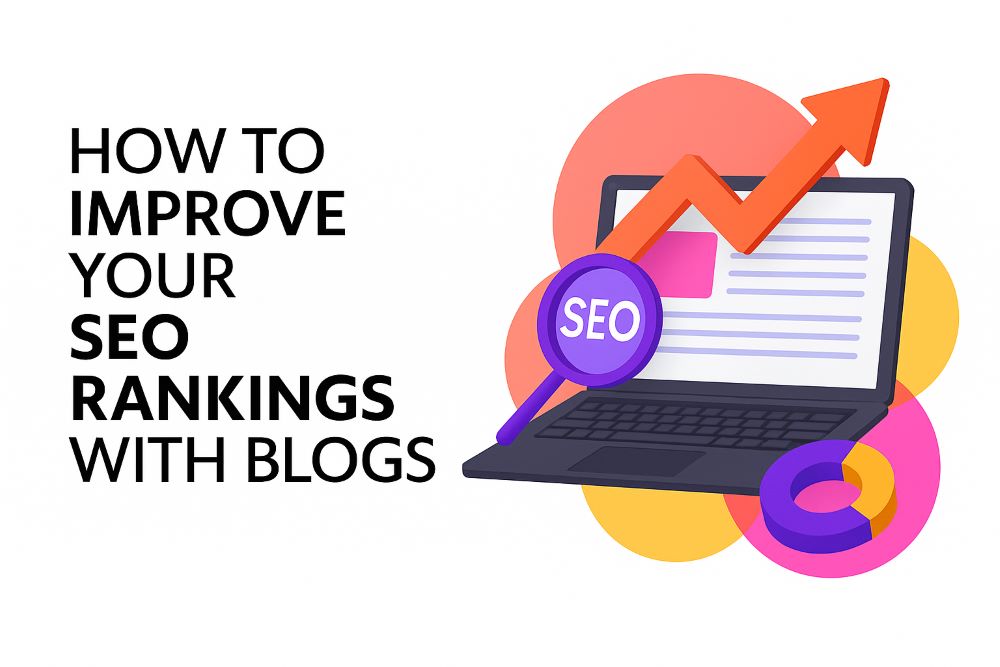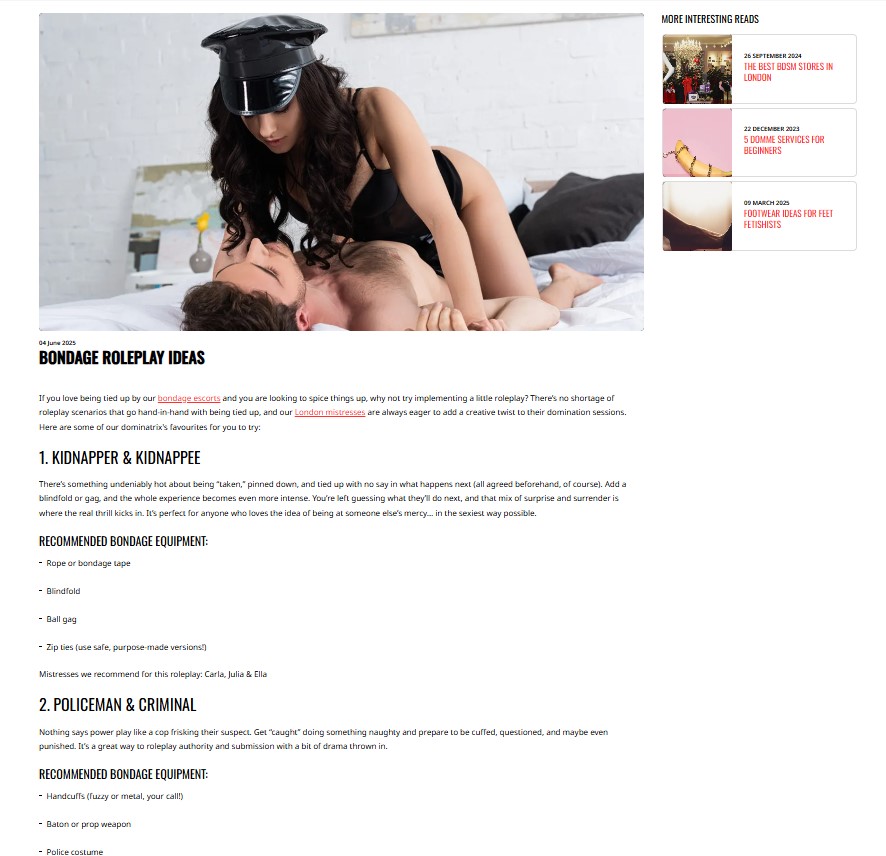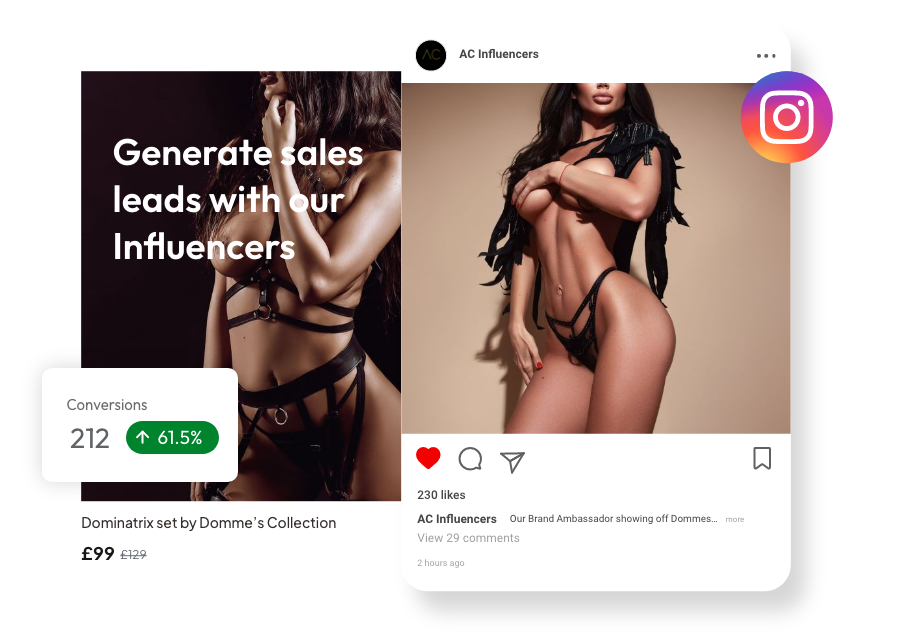How to Improve Your SEO Rankings with Blogs

If you’re in the adult industry and relying on Google to send people to your site, blog content is a must. Why? Because a well-written, properly structured blog post can do what most other traffic channels can’t: bring in highly targeted, qualified visitors at the exact moment they’re searching for something you offer.
Adult SEO isn’t just about your homepage and product pages—it’s about the entire ecosystem of content that supports them. And blog posts are one of the easiest ways to rank for niche search terms, build trust with Google, improve your internal link structure, and—crucially—convert curious readers into paying clients.
Whether you run an escort agency, a sex toy store, a fan platform, or even a porn site, the right blog can give you long-term traffic gains without relying on paid ads or social media trends. In this guide, we’ll break down exactly how to write SEO-friendly blog posts that actually get seen, rank well, and drive results that matter.
Already putting out content but not seeing much in return? Read our guide on why your adult website might not be converting.
What We’ll Cover:
- Why Blog SEO Matters for Adult Sites
- How to Write SEO Friendly Blog Posts
- Blog Structure, Headings & Content Hierarchy
- How Long Should a Blog Post Be for SEO?
- Internal Linking & On-Page Optimisation
- Best Blog Topics for Adult Brands
- How to Optimise Blog Posts for SEO Over Time
1. Why Blog SEO Matters for Adult Sites
It’s quite simple: your blog is there to help Google understand your site, match you to user intent, and give you more opportunities to show up in search results. Let’s say someone types in “best anal toys for beginners” or “how to book an escort in Leeds.” Your goal? To be the result they click.
In simple terms, blog SEO is about creating pages that rank for keywords your main service pages don’t cover. It lets you cast a wider net and pull in traffic that’s actively searching for exactly what you offer.
Done right, an adult SEO blog helps you:
- Target specific, lower-competition queries that your homepage or category pages won’t naturally rank for
- Establish topical authority by showing Google you know your niche inside out—whether it’s GFE escorts or Japanese toys
- Boost the visibility of commercial pages through internal linking and strategic anchors
- Attract traffic from early-stage searchers who aren’t ready to buy… yet—but will be, if you show up and provide value first
And that’s the difference between blogging for the sake of it and blogging strategically. If you’re wondering how to improve adult SEO with blog posts, start by seeing them as functional SEO tools… not fluff or filler.
If you’re wondering how long it takes for SEO to take effect, read our blog covering the ins and outs of the process.
2. How to Write SEO-Friendly Blog Posts
Writing for SEO is about understanding how your audience searches… and giving them something worth clicking on. That means useful content, keyword clarity, strong internal linking, and an eye-catching headline.

Here’s how to write blog posts for SEO that do the job right:
- Start with keyword research: Don’t guess what people are typing into Google. Use tools like Ahrefs, SEMrush, Google Search Console, or even autocomplete and “People Also Ask” boxes to spot real-world search terms. Long-tail queries like “how to book an escort for a couple” or “best clit suction toys UK” are often low-competition goldmines.
- Stick to one main keyword per post: Your blog should have a clear focus. Trying to rank for 12 unrelated terms in one article just dilutes the signal. Choose one core phrase, and naturally build the post around it.
- Use the keyword with intent: It’s still smart SEO to include your keyword in the title (H1), URL, meta description, intro, one H2, and throughout the copy where it makes sense. But don’t overdo it—Google’s natural language processing is smart enough now to sniff out stuffing from a mile off.
- Write like a human, not a bot: Your content should read smoothly, provide actual value, and answer real questions. People often make the mistake of writing for Google, when really, you should be writing for someone who might become a customer. Speak their language.
Blog SEO today is all about intent, structure, and value. If your post doesn’t answer a real question, solve a problem, or help the reader make a decision, it probably shouldn’t be published.
Need help finding blog topics your audience is actually searching for? Read our adult SEO keywords guide.
3. Blog Structure, Headings & Content Hierarchy
If you want Google to understand your post (and users to stick around long enough to read it), structure is quite important. Bad formatting and messy headings don’t just make your blog look amateurish; they directly affect how you rank.

Here’s how to structure a blog post for SEO and readability:
- Use one H1 (the title): Every page should have a single, clearly defined main heading. That’s your blog’s headline. Don’t duplicate it or break it up.
- Break up content with H2s: Think of H2s as your chapter headings. Each one should cover a key theme, sub-topic, or common question related to the main keyword.
- Use H3s for supporting points: These help you drill down further into details under a section. They’re also great for lists, examples, or clarifications that deserve their own formatting.
Here’s an example of a clean SEO blog structure for an e-commerce site:
H1: Try These Fun Bondage Ideas With Your Partner
H2: What to Know Before You Try Bondage
H2: Top 5 Bondage Ideas to Try
H3: Hogtie
H3: Predicament Bondage
H2: The Importance of Aftercare
… and so on.
Why does this help? Because it makes your blog easy to scan (for users) and easy to crawl (for Google). It also increases your chances of getting featured snippets or sitelinks, especially when questions are used in your H2s.
Not convinced structure matters? See how we landed Lollipop Escorts on Page 1 by strengthening key pages and supporting blogs.
4. How Long Should a Blog Post Be for SEO?

This is one of the most commonly asked questions when it comes to SEO blog writing, so let’s get straight to it.
In 2025, the average top-ranking blog post still lands in the 1,500–2,500 word range. But that number on its own means nothing if the content’s thin, repetitive, or bloated for no reason.
So, how long should a blog post be for SEO? Long enough to:
- Fully answer the user’s query (and related sub-questions)
- Include your target keyword and supporting phrases naturally
- Link out to helpful internal and external resources
- Embed rich media—images, graphics, short videos, even GIFs if on-brand
Short blogs can still rank in niche areas—but in most competitive adult sectors, a 400-word “update” just isn’t going to cut through. Google’s looking for depth, clarity, and trust signals. A tight, well-structured 1,500-word post that teaches, persuades, or informs? That’s what gets rewarded.
For more insight, check out Semrush’s data-driven guide on how long a blog post should be.
5. Internal Linking & On-Page Optimisation
If your blog isn’t doing double duty—ranking and supporting your key service or product pages—you’re wasting an opportunity. A good SEO blog is part content hub, part traffic funnel. It shouldn’t exist in isolation.
Here’s how to optimise blog posts for SEO while building a stronger site architecture:
- Link to your key money pages: Every blog should include internal links to relevant service pages, product categories, or escort galleries—using natural, descriptive anchor text (not just “click here”).
- Include contextually relevant blog links: Got other content that adds value or answers related questions? Link to it. If you’re writing about why women love vibrators, link to your “Top 5 Vibrators of the Year” blog—or plan ahead for that blog if you haven’t already written it.
- Add service and case study links: Especially useful for creators, agencies, or studios showcasing results. It shows credibility and helps with conversion.
On-page SEO best practices to never skip:
- Alt tags: Every image should have a short, descriptive alt tag that fits the content and includes a relevant keyword if possible.
- Meta titles + descriptions: These influence both ranking and click-through rate. Keep them punchy, under 60/160 characters respectively, and front-load the value.
- Clean, readable URLs: Use hyphens, keep it short, and make sure it reflects the topic.
/blog/how-to-book-escorts-ukis perfect./blog/post123?id=764… not so much.
Worried your site might crash when the clicks start rolling in? Read our guide on how to handle high traffic on your adult website.
6. Best Blog Topics for Adult Brands
Not sure what to write about? You’re not alone. A big part of learning how to write SEO blog content is picking topics that not only rank but also attract the right readers. Start with what your audience is curious about: how to book, how to choose, how to feel confident buying, or what makes your brand stand out.

Escort Agencies
- “Top 5 Escorts in [City] This Month” — Easy to write, great for long-tail traffic and internal linking
- “How to Meet an Escort in Public Discreetly” — Captures search intent + helps build trust
- “Why Men Love GFE Experiences—Backed by Real Reviews” — Educational and keyword-rich
Adult Stores
- “Clitoral Suction Toys: Which One’s Right for You?” — High purchase intent + review content
- “Beginner’s Guide to Anal Play” — Evergreen, educational, highly searched
- “The Best Couples Toys for 2025 (Reviewed)” — Combines product promotion with search-friendly formatting
Creator Sites & Clip Platforms
- “How to Turn Subscribers into Superfans” — Great for creator onboarding and retention
- “What Makes a Great Teaser Clip?” — Keyword-rich for creators seeking advice
- “Why You Need Video on Your Site” — We broke this down in our very own blog on why videos are important
Each of these blog types should feel like a natural part of your SEO strategy. Write with purpose. Every post should either build authority, answer a question, or move the reader closer to booking, buying, or subscribing.
7. How to Optimise Blog Posts for SEO Over Time
Hitting publish isn’t the finish line… far from it! A well-optimised blog might get you initial rankings, but if you want it to stay visible (and valuable), you need to keep it fresh.
Here’s how to optimise blog posts for SEO even after they go live:
- Update outdated stats or info: Old product names, irrelevant search trends, or broken links can hurt your credibility. Google notices when your content is stale.
- Add fresh internal links: Every time you publish a new blog or launch a new service page, check if older posts can link to it. This strengthens your site architecture and keeps users moving.
- Test new titles + meta descriptions: Even a small headline tweak can boost your click-through rate. Rewriting your meta for seasonal or emotional relevance can make a real difference.
- Give posts a second life: Share them on socials or in your newsletter again, but this time with a different angle. Example: “Still booking escorts the old way? Here’s how to do it right in 2025.”
The best SEO blog strategies treat content as an asset, not a one-and-done article. Updating just five top-performing posts could increase your site’s organic traffic more than writing twenty new ones.
Let’s Get Started

If you’re asking how to improve adult SEO with blog posts, the answer isn’t “write more.” Blog SEO in 2025 is about creating useful, well-structured, deeply targeted content that meets real search intent, and revisiting it regularly.
One carefully planned SEO blog post can drive more traffic, trust, and conversions than ten filler updates no one finishes reading.
Explore our SEO services if you’re ready to build a blog strategy that ranks well, whether you’re running an escort agency, adult store, creator platform, or porn site.
And if your site doesn’t convert that traffic into bookings, sales or subs, our adult web design team can fix that too.



